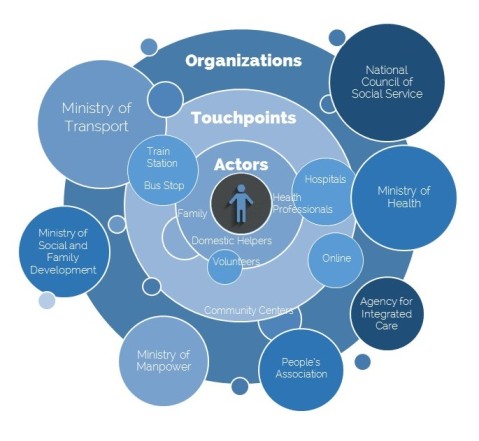Update From Modern Aging Singapore: Kickoff Workshop

Modern Aging Singapore kicked off in the middle of August. So far, the program has seen active participation and support from aspiring entrepreneurs. About three hundred students, health practitioners, researchers, and members of the public attended the Kickoff Workshop held at the NUS I Cube Building Auditorium on the morning of August 15.
Attendees were treated to four presentations from experts in aging and business: Overview of Aging by Prof. Angelique Chan of Duke-NUS Graduate Medical School, Healthcare and Business by Dr. Jeremy Lim of Oliver Wyman, Home and Center Based Care by Dr. Ng Wai Chong of the Tsao Foundation, and Product Design for Seniors by Hunn Wai of design firm Lanzavecchia + Wai.
 Prof. Chan highlighted some key trends and statistics on aging in Singapore. One surprising point was the high prevalence of social isolation among seniors here. This finding spurred aspiring entrepreneurs to think of novel solutions to address this trend.
Prof. Chan highlighted some key trends and statistics on aging in Singapore. One surprising point was the high prevalence of social isolation among seniors here. This finding spurred aspiring entrepreneurs to think of novel solutions to address this trend.
Dr. Lim went on to outline the aging sector in terms of business potential. One suprising finding, according to theNational Center for Policy Analysis, is the average net worth in 2010 was 848,000 USD for sixty five to seventy four year olds and nearly seven hundred thousand dollars for those above seventy five. These figures encouraged aspiring entrepreneurs to enter the aging sector.
Dr. Ng discussed the current status of home and center based care in Singapore. He highlighted specific needs in these care settings frequently used by seniors. This discussion allowed aspiring entrepreneurs to hone in on key areas of need and address these pain points. For example, some challenges in these settings include the quick and painless transferring of patients from bed to chair and vice versa, and increasing the time health practitioners can spend with seniors.
Mr. Wai rounded off the presentations with insights from product and design perspectives. He introduced examples of good design for seniors, such as mixed use canes and walkers, or stylish back braces. This presentation especially inspired aspiring entrepreneurs to consider seniors’ lifestyles and tastes when introducing new product ideas.
In addition to expert presentations, attendees also heard two senior role models share their life experiences and lessons. Younger members of the audience seemed glad to hear the wise advice dispensed by the seniors. The kickoff event concluded with a networking lunch. Participants became so engrossed in conversations around aging that they lingered past the scheduled end time.
Currently, Modern Aging Singapore has progressed to the business curriculum and selection phase. The top twenty teams have been selected and paired with industry mentors to hone their business ideas. The twenty teams will soon be pitching at the semifinals judging event for the top six spots. Meanwhile, all participants of Modern Aging Singapore are able to access the same business and aging curriculum on the Modern Aging Online Learning Portal to continue learning and improving their business ideas. If you would like to access the Portal, please write an email request to info@modernaging.org.
Find out more about Modern Aging, at www.modernaging.org.
Design for dementia

My co-blogger Stéphanie Treschow earlier blogged about an inspiring London-based fashion brand for pensioners by a young female fashion school graduate, Fanny Karst, designing clothes for women three times her age. I don’t know if Hampus Rendmar, a recent graduate from Konstfack (University College of Arts, Crafts & Design) in Sweden, had heard about her and gotten inspired or if we might be seeing an emerging trend among art/fashion school graduates, but his recent graduation project had a related audience – people with dementia.
Hampus feels that interior design at today’s nursing homes lags behind in general and says that dementia patients have the same right to trends and design as does everyone else. He means that many dementia patients must have gotten tired of the old and worn traditional furniture that fills residential care homes today. Therefore he has created a series of furniture targeting this audience with a focus on design that gives a sense of calm and safety. ‘Calm’ is also the name of two chairs in the project, made out of beech and steel, that have been painted in mediterranean green, since it is said to have a calming effect. Furthermore the chairs have a rocking effect, something that research has shown can diminish worry and stress.
What is up next for Hampus is yet to be told, but both visitors at the final art graduation projects’ exhibition by Konstfack and he himself noted that his furniture was widely popular among the audience throughout the whole exhibition. Maybe ‘Calm’ is soon to be found in a nursing home near you.
Source (in Swedish): http://www.dn.se/bostad/han-vill-ge-dementa-god-design
Image source: http://blog.trendgruppen.se/?p=10760








